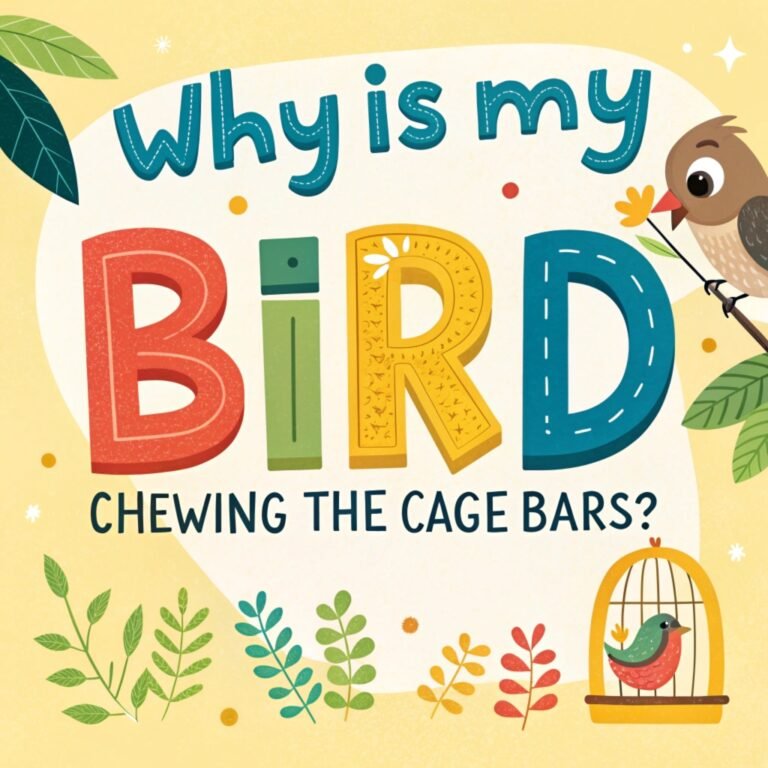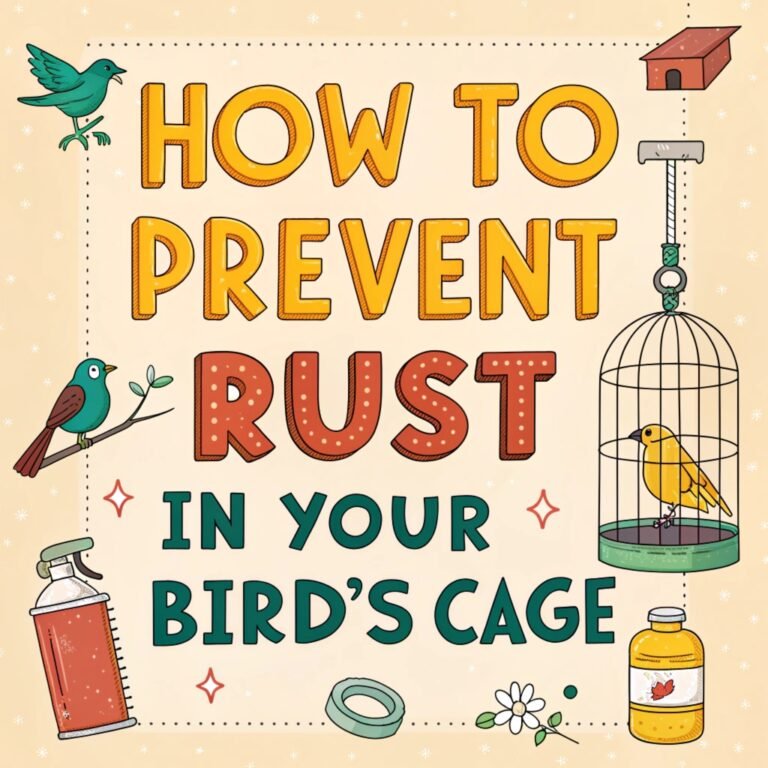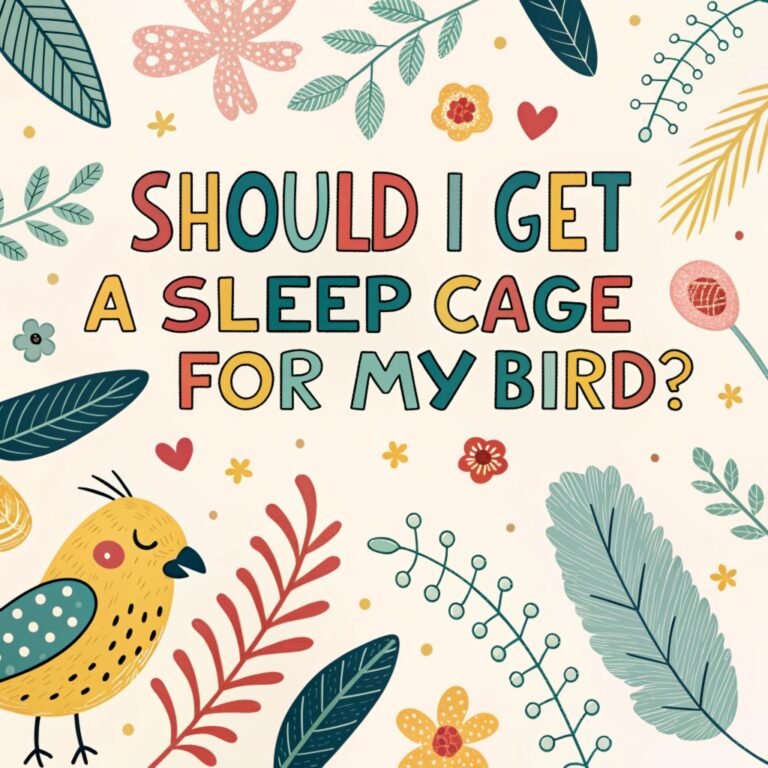What Is The Perfect Size Cage For My Bird Species? – A Comprehensive Guide to Choosing the Right Cage
Selecting the ideal cage for your avian companion is a crucial decision that directly impacts their health, happiness, and overall well-being.
The perfect cage size varies depending on the species of your bird, their individual needs, and the space available in your home.
This comprehensive guide will help you navigate the complexities of choosing the right cage, ensuring your feathered friend has a comfortable and stimulating environment to thrive in.
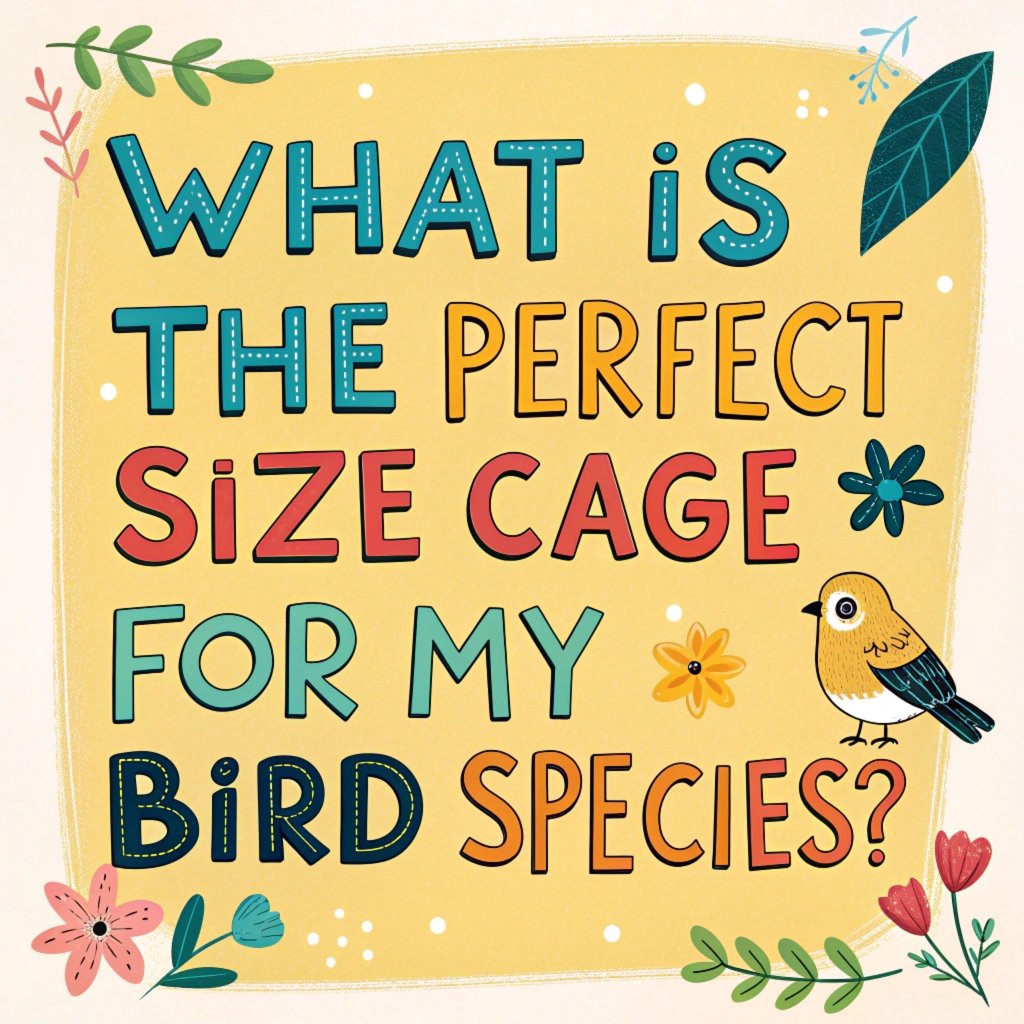
Key Takeaways
- Cage size matters: Bigger is generally better for your bird’s health and happiness.
- Species-specific requirements: Different bird species need different cage sizes and bar spacings.
- Minimum dimensions: Always consider the recommended minimum cage sizes as a starting point.
- Bar spacing: Crucial for safety, varies based on bird size.
- Shape matters: Rectangular cages are typically better than round ones.
- Material safety: Choose non-toxic materials like powder-coated metal or stainless steel.
- Room for activities: Ensure space for wing-flapping, climbing, and playing.
- Accessories: Account for space needed for perches, toys, and food/water dishes.
- Multiple birds: Increase cage size proportionally when housing more than one bird.
- Out-of-cage time: Regular time outside the cage is essential for exercise and mental stimulation.
- Cage placement: Consider a location that allows social interaction but also quiet time.
- Maintenance: Larger cages may require more cleaning but provide a healthier environment.
- Future growth: For young birds, consider their adult size when choosing a cage.
- Budget wisely: Invest in the largest, highest-quality cage you can afford.
- Regular reassessment: As your bird grows or its needs change, be prepared to upgrade the cage.
Understanding the Importance of Cage Size for Birds
The size of your bird’s cage is not just a matter of comfort; it’s a critical factor in their physical and mental health.
Birds are active creatures that require ample space to move, stretch their wings, and engage in natural behaviors.
A cage that’s too small can lead to stress, boredom, and even physical health issues such as muscle atrophy and feather plucking.
On the other hand, a spacious cage promotes exercise, allows for the inclusion of various toys and perches, and gives your bird the freedom to express its natural behaviors.
When selecting a cage, remember that your feathered friend will spend a significant portion of its life inside, so prioritizing space is essential.
A general rule of thumb is to choose the largest cage you can afford and accommodate in your living space, as this will contribute significantly to your bird’s overall quality of life and longevity.
How to Measure the Right Cage Dimensions for Your Bird
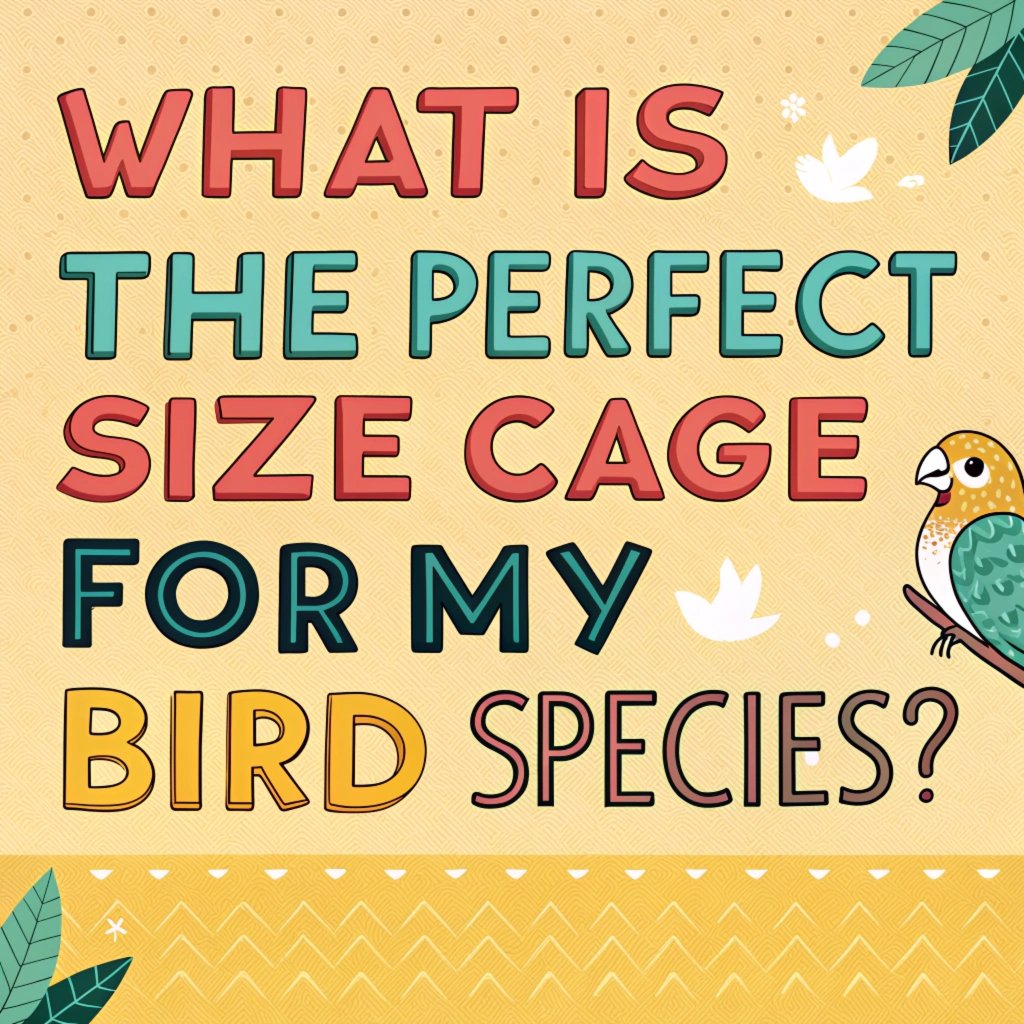
Determining the correct cage dimensions for your bird involves more than just guessing or choosing the biggest option available. Start by considering your bird’s wingspan. The cage should be wide enough for your bird to fully extend its wings without touching the sides.
Measure your bird from wingtip to wingtip when its wings are fully stretched out. The cage width should be at least 1.5 times this measurement.
For height, ensure the cage is tall enough for your bird to comfortably climb and move vertically without its tail touching the bottom. Long-tailed species need extra vertical space.
Depth is also crucial; your bird should be able to turn around easily without its tail feathers hitting the cage bars.
Remember to account for space occupied by perches, food and water dishes, and toys. A good rule is to imagine your bird in various positions within the cage – sleeping, eating, playing, and stretching – and ensure there’s ample room for all these activities.
Cage Size Recommendations for Small Birds like Finches and Canaries
Small birds like finches and canaries may be tiny, but they’re incredibly active and require more space than you might think.
For these petite avian friends, the minimum cage size should be approximately 18 inches wide, 18 inches deep, and 24 inches high. However, remember that these are minimum requirements, and larger is always better.
These birds benefit greatly from horizontal space for flying, so consider a cage that’s longer rather than taller.
The bar spacing for finches and canaries should be between 1/4 inch to 1/2 inch to prevent escape and injury. When housing multiple small birds, increase the cage size proportionally.
For example, a pair of finches would do well in a cage that’s at least 24 inches wide, 18 inches deep, and 24 inches high.
Include multiple perches at various heights and widths to promote foot health and provide ample opportunities for exercise and play.
Remember, even small birds need mental stimulation, so ensure there’s enough room for toys and accessories.
Ideal Cage Sizes for Medium Birds such as Cockatiels and Parakeets
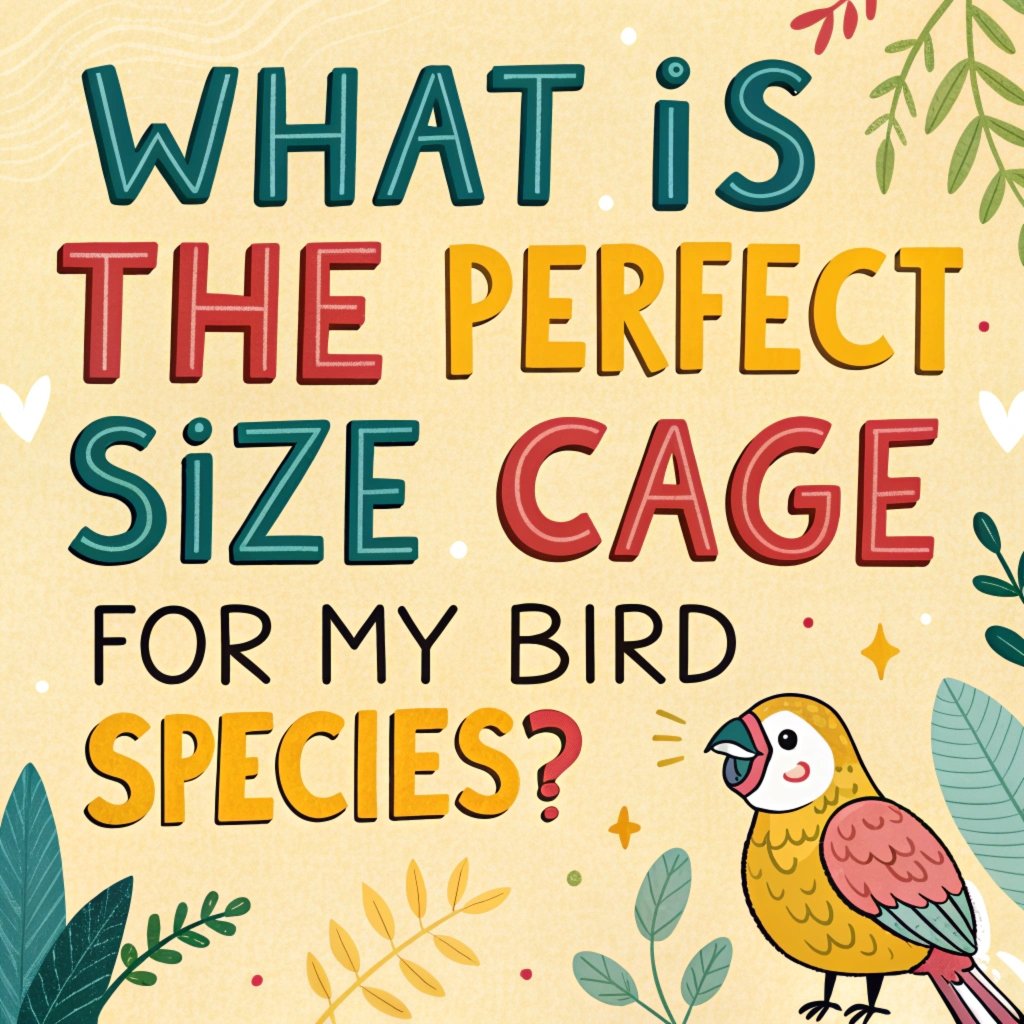
Medium-sized birds like cockatiels and parakeets require more substantial cages to accommodate their active lifestyles and larger size.
For a single cockatiel or parakeet, the minimum cage size should be approximately 20 inches wide, 20 inches deep, and 24 inches high. However, as with all birds, larger is always better.
These birds benefit from cages that offer both vertical and horizontal space for climbing and short flights. The bar spacing for cockatiels and parakeets should be between 1/2 inch to 5/8 inch.
If you’re housing a pair of these medium birds, consider a cage that’s at least 24 inches wide, 24 inches deep, and 24 inches high.
Remember that cockatiels have long tail feathers, so extra height is beneficial to prevent damage to their plumage.
Include a variety of perches at different levels and diameters to promote foot health and provide opportunities for exercise.
Ensure there’s enough space for multiple toys, swings, and foraging activities to keep your bird mentally stimulated and physically active.
Choosing the Perfect Cage for Large Birds like Macaws and African Greys
Large parrots such as macaws and African greys require spacious cages that can accommodate their impressive size and high activity levels.
For a single large parrot, the minimum cage size should be approximately 36 inches wide, 24 inches deep, and 48 inches high for African greys, and even larger for macaws – at least 36 inches wide, 48 inches deep, and 60 inches high.
However, these are absolute minimums, and larger cages are strongly recommended. The bar spacing for these large birds should be between 3/4 inch to 1 inch for African greys and 1 inch to 1.5 inches for macaws.
When housing these majestic birds, consider their powerful beaks and intelligence – the cage should be made of sturdy, chew-resistant materials with secure locks.
Provide ample space for large toys, multiple perches of varying sizes, and climbing opportunities.
Remember that these birds need significant out-of-cage time for exercise and socialization, but their cage should still be spacious enough for comfort when they need to be confined.
The Role of Bar Spacing in Bird Cage Selection
Bar spacing is a critical yet often overlooked aspect of cage selection that plays a vital role in your bird’s safety and comfort.
The appropriate bar spacing prevents your bird from getting its head stuck between the bars or escaping.
For small birds like finches and canaries, the bar spacing should be between 1/4 inch to 1/2 inch.
Medium-sized birds such as cockatiels and parakeets require bar spacing of 1/2 inch to 5/8 inch.
Larger parrots like African greys need bar spacing of 3/4 inch to 1 inch, while the largest species like macaws can safely have bars spaced 1 inch to 1.5 inches apart.
It’s important to note that bar spacing that’s too wide can lead to escape or injury, while spacing that’s too narrow can make it difficult for your bird to climb and may cause frustration.
Additionally, the thickness and strength of the bars should be appropriate for your bird’s size and beak strength to prevent bending or breaking.
Always prioritize safety when selecting a cage, ensuring that the bar spacing is suitable for your specific bird species.
Why Bigger Cages Are Always Better for Your Bird’s Health
When it comes to bird cages, the adage “bigger is better” holds true for numerous reasons. Larger cages provide birds with more opportunities for physical exercise, which is crucial for maintaining muscle tone, cardiovascular health, and preventing obesity.
In a spacious cage, birds can fully extend their wings, fly short distances, and engage in natural behaviors like climbing and foraging.
This increased activity level contributes to better overall physical health and can help prevent issues like arthritis and foot problems.
Moreover, a bigger cage allows for the inclusion of more toys, perches, and enrichment items, which are essential for mental stimulation and preventing boredom-related behaviors such as feather plucking or excessive screaming.
Larger cages also promote better air circulation, reducing the risk of respiratory issues that can occur in cramped, stuffy environments.
Additionally, more space means less frequent cleaning is required to maintain a hygienic living area, although regular cleaning is still essential.
While the initial cost of a larger cage may be higher, the long-term benefits to your bird’s health and happiness make it a worthwhile investment.
Portable vs. Permanent Cages: Which One Should You Choose?
The decision between portable and permanent cages depends on various factors, including your lifestyle, your bird’s needs, and your living situation.
Permanent cages are typically larger and more stable, providing a consistent home base for your bird.
They offer more space for toys, perches, and activities, making them ideal for birds that spend significant time in their cages. These cages are often sturdier and can withstand more wear and tear from larger birds.
On the other hand, portable cages offer flexibility and are useful for travel, vet visits, or moving your bird to different rooms.
They’re generally smaller and lighter, making them easier to clean and relocate. Some bird owners opt for both: a large permanent cage for daily living and a smaller portable one for travel or temporary use.
When choosing, consider your bird’s size, activity level, and how much time they’ll spend in the cage.
Also, think about your own needs – do you travel frequently with your bird or need to move the cage for cleaning?
Ultimately, the best choice is one that provides a safe, comfortable environment for your bird while fitting your lifestyle and space constraints.
How Cage Design Impacts Your Bird’s Comfort and Safety
The design of your bird’s cage plays a crucial role in ensuring both comfort and safety. Rectangular cages are generally preferred over round ones, as they provide more usable space and make birds feel more secure.
The cage top should be flat rather than domed, offering a comfortable perching spot. Bar orientation is important – horizontal bars encourage climbing and exercise, while vertical bars can limit movement.
Corner design is another consideration; rounded corners are safer and easier to clean than sharp angles.
The cage bottom should be easily removable for cleaning and lined with a non-toxic, easy-to-clean material.
Multiple access points, including large doors for easy entry and smaller ones for attaching external feeders, enhance convenience and safety during interactions.
The placement of food and water dishes should be strategic to prevent contamination from droppings.
Perches should be placed at various heights and made of different materials to promote foot health.
Lastly, ensure all latches and locks are secure and bird-proof to prevent escapes. A well-designed cage not only keeps your bird safe but also promotes natural behaviors and overall well-being.
Tips for Setting Up the Interior of Your Bird’s Cage
Creating an engaging interior for your bird’s cage is essential for their physical and mental well-being. Start by placing multiple perches of varying diameters and textures throughout the cage.
This diversity helps exercise your bird’s feet and prevents pressure sores. Position perches at different heights, ensuring your bird can comfortably move between them without their tail touching the cage bottom.
Food and water dishes should be easily accessible but placed away from perches to prevent contamination. Include a variety of toys that encourage foraging, chewing, and problem-solving.
Rotate these toys regularly to maintain interest. For larger birds, consider adding swings or rope perches for additional exercise options.
Create foraging opportunities by hiding treats in toys or using puzzle feeders. Natural branches (ensure they’re bird-safe) can provide additional climbing and chewing opportunities.
If your bird enjoys bathing, include a shallow bath or mister. Always ensure there’s enough open space for your bird to fully stretch its wings.
Regularly inspect all items in the cage for wear and tear, replacing them as needed to maintain a safe environment.
Remember, a well-set-up cage interior not only keeps your bird physically active but also mentally stimulated, promoting overall health and happiness.
Common Mistakes to Avoid When Buying a Bird Cage
When purchasing a bird cage, several common pitfalls can compromise your feathered friend’s well-being. One of the most frequent mistakes is choosing a cage that’s too small.
Remember, bigger is always better when it comes to bird cages.
Another error is selecting inappropriate bar spacing – too wide can lead to escapes or injuries, while too narrow can frustrate larger birds.
Opting for a round cage is also problematic, as it can cause disorientation and stress in birds. Neglecting the importance of cage material is another mistake; avoid cages with toxic finishes or materials that can harm your bird if chewed.
Some bird owners make the error of prioritizing aesthetics over functionality, choosing ornate cages that are difficult to clean or don’t provide adequate space for movement.
Overlooking the need for multiple perches and a variety of toys can lead to a boring environment.
Positioning the cage incorrectly in your home, such as in drafty areas or direct sunlight, can also be detrimental.
Lastly, failing to consider your bird’s specific needs based on its species, size, and behavior can result in an unsuitable living environment.
By avoiding these common mistakes, you can ensure that your bird’s cage provides a safe, comfortable, and stimulating home.
How to Maintain and Clean Your Bird’s Cage for Longevity
Regular maintenance and cleaning of your bird’s cage are crucial for both the health of your feathered friend and the longevity of the cage itself.
Establish a daily cleaning routine that includes removing droppings, uneaten food, and any soiled items. Change water and food daily to prevent bacterial growth.
Perform a more thorough cleaning at least once a week, which involves removing all accessories, perches, and toys for individual cleaning. Use a bird-safe disinfectant to clean the cage bars, bottom, and any removable trays.
Rinse thoroughly and dry completely before reassembling the cage. Inspect the cage regularly for any signs of wear, rust, or damage, especially on bars, locks, and hinges.
Replace any worn or damaged parts promptly to maintain safety. Clean and rotate toys and perches regularly to prevent boredom and maintain hygiene.
For wooden items, occasional sun exposure can help naturally disinfect them. Pay special attention to food and water dishes, cleaning them daily with hot, soapy water and rinsing well.
Consider using a vinegar solution for stubborn stains or mineral deposits. Avoid using harsh chemicals or strong-smelling cleaners that could harm your bird.
By maintaining a clean and well-maintained cage, you’re not only ensuring your bird’s health but also extending the life of the cage itself.
FAQs
How often should I clean my bird’s cage?
You should perform a daily spot cleaning to remove droppings and uneaten food. A thorough cleaning should be done at least once a week, involving disassembling the cage and cleaning all components.
Can I house different bird species together?
It’s generally not recommended to house different bird species together. Each species has unique needs and behaviors that can lead to conflicts or stress when mixed.
How many perches should I include in my bird’s cage?
Include at least two to three perches of varying diameters and textures. This variety helps exercise your bird’s feet and prevents pressure sores.
Is it okay to use a second-hand cage?
Using a second-hand cage is fine if it’s in good condition. Ensure you thoroughly clean and disinfect it before introducing your bird. Check for any damage or wear that could pose safety risks.
How much out-of-cage time does my bird need daily?
The amount varies by species, but generally, larger parrots need 3-4 hours of out-of-cage time daily, while smaller birds benefit from 1-2 hours.

Hello, I’m Amelia White, the founder of birdsfanatic.com. As a lifelong bird enthusiast and spiritual seeker, I’ve always been fascinated by the mystical connections between birds and the human experience. On this site, I share my knowledge and insights into the symbolic meanings and spiritual significance of various bird species, exploring their roles in mythology, folklore, and cultural traditions. Join me on this journey into the world of birds, where we’ll discover the hidden wisdom and guidance that these magnificent creatures have to offer.


